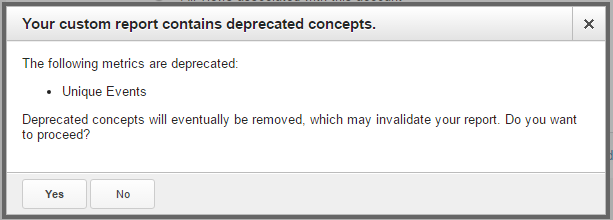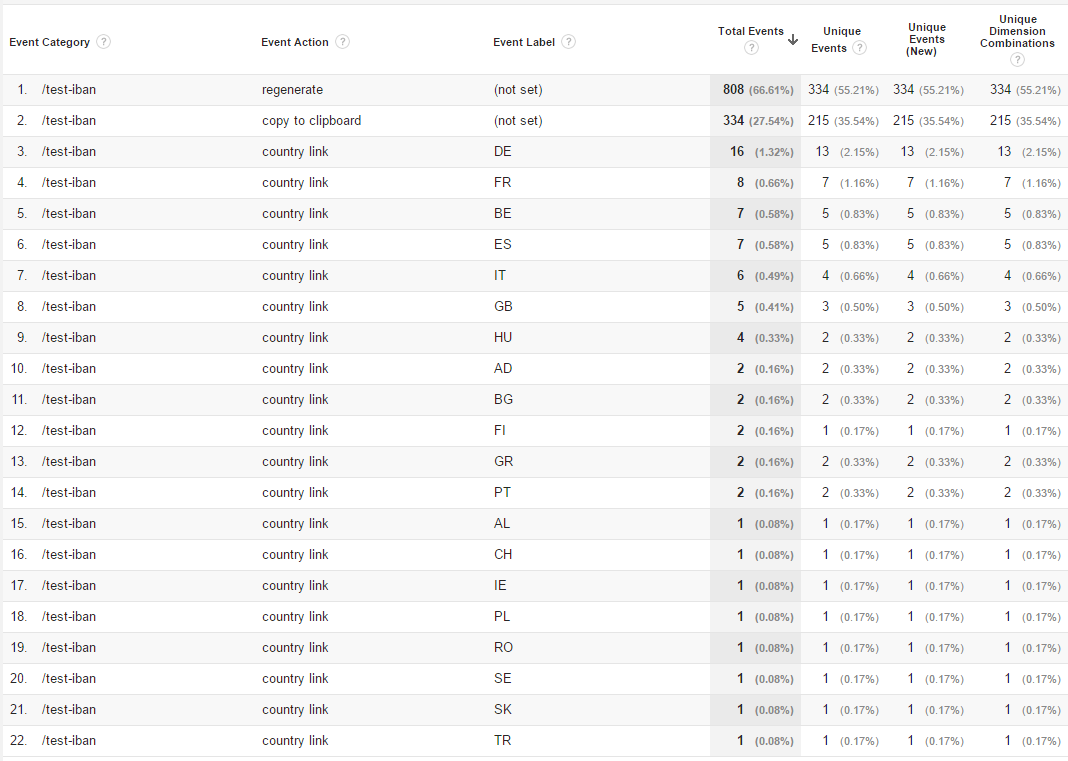As of today, Google has added two new event metrics to Google Analytics: Unique Events (New) and Unique Dimension Combinations. If you still use the old metric, you’ll get a message telling you that it will be dropped:

Unique Events are deprecated warning in Google Analytics.
Let’s see how the two new metrics work.
Update 13/09/2016: it looks like the update has been rolled back by Google. So currently the new metrics won’t show up in Google Analytics.
Comparing the metrics
Looking at data we see that Unique Dimension Combinations returns the same numbers as the old Unique Events. The Unique Events (NEW) metric returns different data:

Sample data export for new event metrics.
The Difference
So what causes these different numbers? It becomes clear as soon as we add the event action:

Sample data export with event action.
As you can see in the example above, the totals of the old Unique Events don’t add up based on event actions. It looks like the old Unique Events totals are deduplicated: if a user had three event actions and one category, it’ll count as 1 for the totals of the old Unique Event (or the new Unique Dimension Combinations).
The numbers of the new Unique Events (New) metric do add up correctly. Apparently the new metric always takes every event dimension (category, action, and label) into account when calculating unique values. As you can see in the example data, we still have a difference in data for the country link action (52 vs 56). Probably there were 4 events removed by deduplication in the old Unique event metric.
To test this I’ve created a flat table with all event dimensions to see if this makes the numbers per row equal:

Flat table with all event dimensions added.
As expected, the values are the same now. So if you’re using the API to import event data you’re in luck: as long as you always import event categories, actions, and labels, the values won’t change.
Takeaway
Based on the examples above we can state the following about the new metrics:
Unique Dimension Combinations
The new Unique Dimension Combinations is the same as the old Unique Events metric. The totals are always deduplicated based on the active dimensions in your report. Use this value if you want to know if an event occurred on a page, ignoring different event category, action and label combinations. Depending on your report, the totals may be different from the sum of the rows. If a user has 3 events with the same category but different actions, it will count as 1 Unique Dimension Combination.
Unique Events (New)
The Unique Events (New) metric always takes all event dimensions (category, action, and label) into account. Use this to see how many unique event combinations occurred on a page. The totals always add up correctly. If a user has 3 events with the same category but different actions, it will count as 3 Unique Events (New).
Happy analysing!







Leave a Reply
You must be logged in to post a comment.